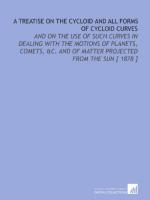|
This section contains 271 words (approx. 1 page at 300 words per page) |
The cycloid is a planar curve, defined as the trajectory traveled by a marked point on the rim of a wheel as it rolls without slipping along a level surface. The cycloid resembles a series of arches, with cusps at the beginning and end of each arch. These cusps correspond to the locations where the marked point touches the ground. At that instant, the point's velocity is zero, thus providing the answer to an old conundrum, "What part of a rolling wheel is at rest?"
The cycloid has a distinguished history of turning up in geometric problems involving motion. The brachistochrone problem asks what shape of a ramp will enable an object to slide from a point A to another point B in the shortest possible time. Using the then newly discovered theory of calculus, Gottfried Leibniz and Isaac Newton proved in 1697 that the solution is an arc of an upside-down cycloid. In 1658, the Dutch physicist Christiaan Huygens discovered the *isochronism of the cycloid: an object placed anywhere on an upside-down cycloid will slide to the bottom of the arch in the same amount of time. As a practical application, Huygens built pendulums that swung in a cycloidal arc, and therefore kept time at a constant rate even as their swings grew smaller. (Ordinary pendulums that swing in a circular arc are nearly, but not exactly, isochronous.)
The cycloid is part of a general class of curves called roulettes (curves produced by rolling) and was one of the first curves whose arc length was computed exactly. The length of each arc is eight times the radius of the wheel.
|
This section contains 271 words (approx. 1 page at 300 words per page) |


